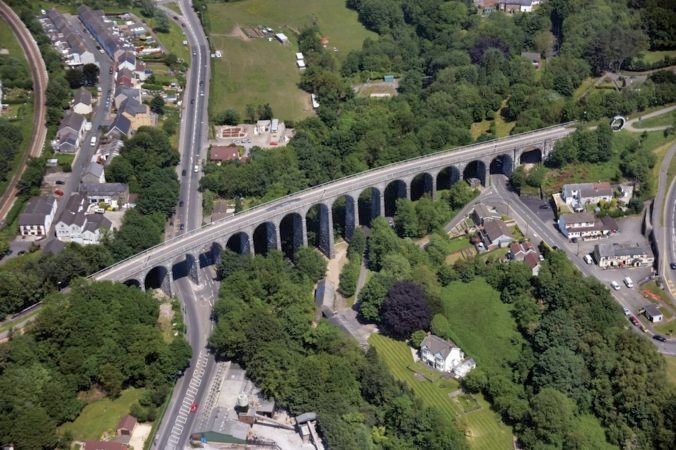The hills are full of traces of human life through the centuries. Helen Morgan from Abergavenny Local History Society reports.

Gwent boasts some the most important industrial archaeology in Wales. Blaenavon ironworks are justly famous, but Sirhowy and Clydach are equally awe-inspiring. So, too, are the remains of the railway viaducts between Merthyr Tydfil and Abergavenny at Clydach, Dukestown and Maes y Cymmer (known locally as the Nine Arches).
Before technology enabled deep pit mining, opencast mining, known as patching, left its mark on the landscape on the landscape, notably on the Clydach Terraces above Brynmawr. Later in the 18th century, mining went underground in shallow bell pits. A horse-driven winch — from which Winchestown near Nantyglo got its name — lowered men to the pit to mine the minerals. Bell pit hollows are still visible on the Blorenge.
Subsequent growth of the iron industry demanded greater quantities of both coal and iron. The next development was to dam streams and create a “pound” or pond of water which, when released, scoured the turf, soil and gravel — leaving the coal or iron ore. Its legacy is “a distinctive large meandering canyon with a pathetically small stream trickling across the bottom”, says Frank Olding. “As well as at Rassau and Upper Race, evidence of this can be seen on the Blorenge.”
Before the Industrial Revolution, the rural Welsh spent winter in the hendre in the valley and moved their flock and herds to the upland grazing grounds at the hafod between May and October. The limestone landscape around Trefil, north of Tredegar, is dotted with remains of this pastoral cycle. A typical hafod consisted of a small hut and circular or oval fold for penning sheep or cattle. Near Trefil, a primitive limekiln is included in the usual set. Spreading quicklime over the moorland killed the acid-loving heather and bracken, allowing grass to flourish. In the same area, grouse shooting has left its mark with the most striking example being the Duke’s Table on the banks of Nant Trefil. Here a circular picnic table and bench were constructed of earth and turf for the Duke of Beaufort’s shooting parties to dine al fresco. Nearby, a spring was diverted into a stone tank, reputedly to cool His Grace’s wine.
Frank Olding’s talk on Upland Gwent at the Borough Theatre on May 18 follows the AGM at 7.30pm. Non-members may join on the night.
www.abergavennylocalhistorysociety.org.uk
Helen Morgan

